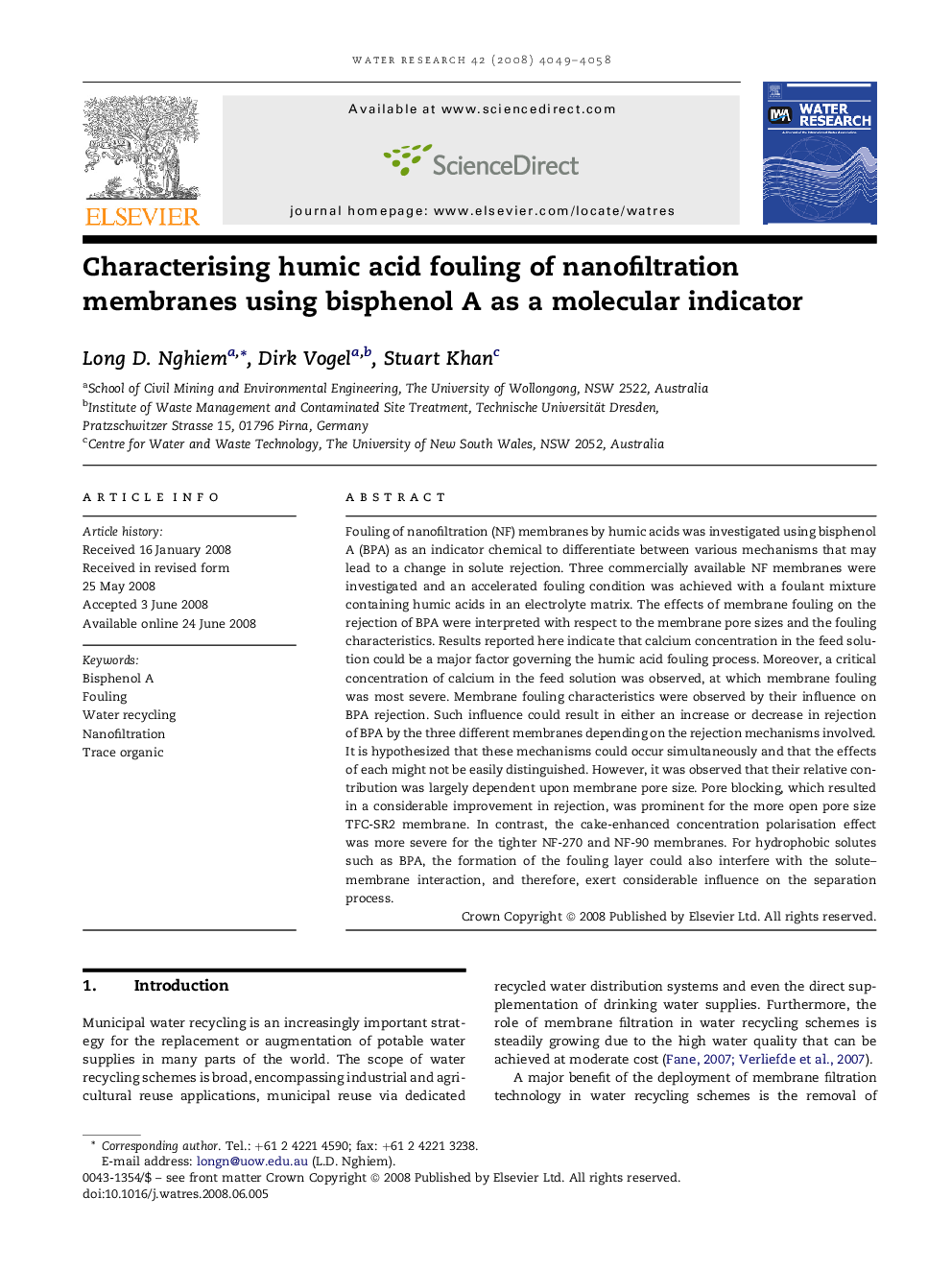| کد مقاله | کد نشریه | سال انتشار | مقاله انگلیسی | نسخه تمام متن |
|---|---|---|---|---|
| 4484802 | 1316932 | 2008 | 10 صفحه PDF | دانلود رایگان |

Fouling of nanofiltration (NF) membranes by humic acids was investigated using bisphenol A (BPA) as an indicator chemical to differentiate between various mechanisms that may lead to a change in solute rejection. Three commercially available NF membranes were investigated and an accelerated fouling condition was achieved with a foulant mixture containing humic acids in an electrolyte matrix. The effects of membrane fouling on the rejection of BPA were interpreted with respect to the membrane pore sizes and the fouling characteristics. Results reported here indicate that calcium concentration in the feed solution could be a major factor governing the humic acid fouling process. Moreover, a critical concentration of calcium in the feed solution was observed, at which membrane fouling was most severe. Membrane fouling characteristics were observed by their influence on BPA rejection. Such influence could result in either an increase or decrease in rejection of BPA by the three different membranes depending on the rejection mechanisms involved. It is hypothesized that these mechanisms could occur simultaneously and that the effects of each might not be easily distinguished. However, it was observed that their relative contribution was largely dependent upon membrane pore size. Pore blocking, which resulted in a considerable improvement in rejection, was prominent for the more open pore size TFC-SR2 membrane. In contrast, the cake-enhanced concentration polarisation effect was more severe for the tighter NF-270 and NF-90 membranes. For hydrophobic solutes such as BPA, the formation of the fouling layer could also interfere with the solute–membrane interaction, and therefore, exert considerable influence on the separation process.
Journal: Water Research - Volume 42, Issue 15, September 2008, Pages 4049–4058